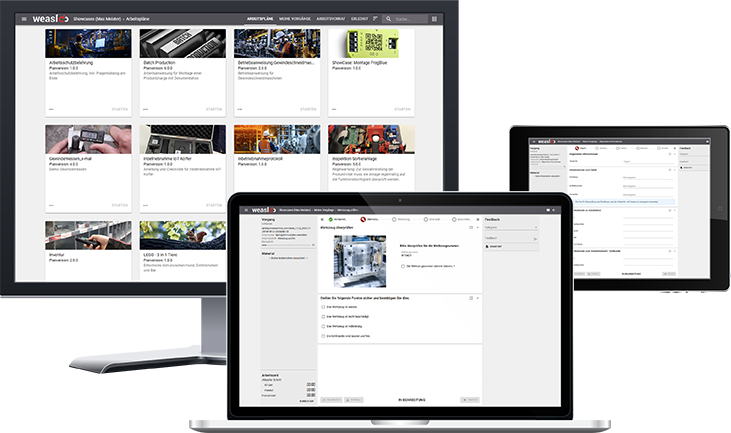What are digital checklists?
Put simply, digital checklists are the digital version of classic, paper-based checklists and questionnaires.
Like any checklist, the digital version also documents recurring processes. It systematically records checkpoints and queries predefined values and data.
Sometimes they also appear as control lists, checklists or “check-off lists”, but in terms of content they all fulfill the same function.
However, checklists are not only found in the production environment as pure query lists, they often even serve as a rudimentary form of digital work instruction.
What are the advantages of digital checklists?
A checklist in itself already has the advantage of formalization and standardization: In principle, it always asks for the same facts. Digital checklists also offer a whole range of other advantages:
- Time saving: The data ends up directly in the system, eliminating manual transfer processes.
- Reduction in errors: There are no more unclear or illegible checklists. Misunderstandings can be avoided.
- Mandatory fields: In contrast to their classic counterparts, digital checklists can request validations or mandatory fields that cannot be omitted.
- Predefined data: Digital checklists can already be filled with predefined data and updated dynamically.
- End of paperwork: Employees take a paper checklist, fill it out, bring it back and still have to transfer it? Not with digital checklists.
- Always up-to-date: Digital checklists can be updated and made available during ongoing operations. Employees always reliably use the latest version.
- User-friendly: Digital checklists often offer multilingualism at the touch of a button, can be used on various end devices and are “weatherproof”.
- Multimedia content: Digital checklists can be easily enriched with photo documentation, for example.
- Real-time synchronization: Entered data ends up directly in the system, creating real-time transparency about the process.
- Logging: Logs can be generated automatically. They represent or access audit-proof documented data.
Examples and application scenarios
You can use digital checklists wherever data, values, statuses, etc. need to be recorded and documented and the underlying process has a certain degree of standardization.
An example of this is the quality control of a product: The product must have certain, firmly defined characteristics so that it can be sold as a good part. You can query these characteristics via a digital checklist (including mandatory fields and limit values) and save them directly in the system.
Further areas of application can be found in
- inspections
- acceptances
- inspection
- maintenance
Digital checklists are also not uncommon in assembly. Here, assembly instructions are distributed to the workers in the form of digital checklists. This works best when the assembly processes are as linear and simple as possible.
Goals of digital checklists
Why would you use digital checklists in your company? To record data digitally? To avoid errors? To make your employees' work easier? This is all absolutely correct and shows how diverse the objectives of digital checklists can be.
In general, digital checklists simplify all inspection processes and make them more efficient. They also help to standardize work processes.
THE system for digital checklists and more
Create digital checklists with mandatory fields, advanced forms, limit value specifications and process interlocks – in just a few clicks with our worker guidance system weasl.
Experience what weasl can do – in our showcase environment.


